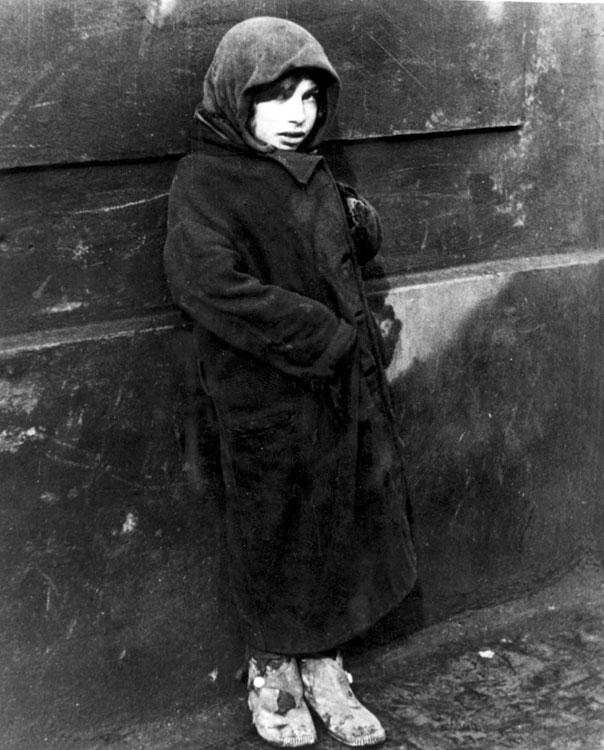In November 1940, the Warsaw ghetto was sealed, incarcerating some 380,000 Jews within its walls. They comprised about 30% of Warsaw's population, but were forced to cram into a space of less than 3.5 square km, 2.4 percent of the city's surface area. On average, each room inside the ghetto held 6-7 people.
After the ghetto was sealed, preventing its inhabitants' departure, approximately 100,000 more Jews were deported there from neighboring towns. These refugees were in worse condition than that of Jews already confined in the Warsaw ghetto: Many had had to make a journey of dozens of kilometers to reach the ghetto, and left most of their belongings behind. When they arrived, the apartments in the ghetto were already crammed full, and so, many were homeless. They were also lacking in food, basic winter clothes, and a way to make a living.
The Jews on the streets of the ghetto tried to be resourceful, and to invent new ways of surviving. However, despite this, and despite the efforts of the Warsaw Jewish community, these refugees were the first to perish in the ghetto. In the first 18 months of the ghetto's existence, approximately 100,000 inmates succumbed to cold, starvation and disease. The vast majority were refugees from outside Warsaw.
The photograph was taken by Joe Heydecker. Heydecker was a German anti-Nazi photographer and author. Before the war, he travelled around Poland, and was impressed by the hospitality he received from Jews. He remembered the weeks he spent in Warsaw as "some of the happiest weeks of my life". His memories of Warsaw helped him find his way around the ghetto when he returned to the city in early 1941 and entered the ghetto illegally in order to document ghetto life.
In late August 1939, Heydecker was drafted to the German Army and attached to the military propaganda unit PK 689. He took more than 1,000 photographs of life in the German Army during his military service. In early 1941, he received the order to go to Warsaw and join the propaganda unit. Amongst his most noteworthy photographs are the illegal pictures he took inside the Warsaw ghetto in February 1941, which expose the horrific conditions in the ghetto. Two of his friends - photography laboratory technicians in his unit - and his wife, risked their lives to help him hide these photographs. The Gestapo searched Heydecker’s home, but never found the photographs.
Heydecker documented Jewish life in the ghetto with an empathetic eye. His photographs depict the ghetto streets in the winter of early 1941, and show scenes of poverty, beggars and peddlars, as well as Jewish and German policemen by the gates and walls of the ghetto.
As for motives, Heydecker states that at no time did he take photographs as part of his official duties. His activities were his own, and he was aware of the risk of taking photographs in the ghetto, which was forbidden. He was torn by shame, hate and helplessness, and vowed to keep his photographs hidden until they could be shown to the world. Heydecker lived with his own personal guilt for taking photographs and not doing anything to help the unfortunate Jews living in the ghetto.
In April 1945, with the entry of the Red Army to Berlin, Heydecker was relieved of his military duties. He escaped westward, and was taken prisoner by the US forces. When he showed one of the American commanders some of his photographs, he was released and allowed to go to the location where he had stored the films.
After the war ended, on the initiative of a US Army officer, Heydecker spoke on Radio Munich about what he had seen in the Warsaw ghetto, and he also covered the Nuremberg Trials. He made a living as a journalist and writer, and moved to Brazil in 1960. In 1981, the first exhibition of Heydecker’s photos of the Warsaw ghetto opened in Sao Paolo. Many of the photographs appear in Heydecker's book, Where is thy Brother Abel? Documentary Photographs of the Warsaw Ghetto, published in Sao Paolo in 1981, and in Munich in 1983.
Yad Vashem Photo Archives, 1014/5/70







